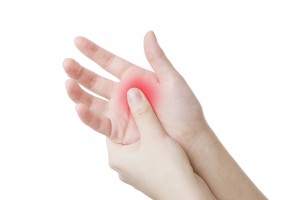What is Trigger Finger and how can you treat it?
Stenosing tenosynovitis also commonly known as trigger finger is a condition that results owing to the repeated squeezing and gripping motions of the fingers, related to the pursuit of hobbies or professional work. It is known to affect working professionals in various parts of the globe, especially those who have to spend a lot of time on the computer. In such a condition, the sheath which surrounds the tendon of the human finger becomes narrower and narrower resulting in the onset of immense pain and at times even numbness. To be able to treat such a condition, the following tips can be taken into consideration.

Avoid Repetitive Finger Movement
Repetitive actions need to be avoided at all costs when it comes to the usage of the fingers. If professional tasks entail repetitive action then these tasks need to be switched with those that require less repetition. It would therefore be a good idea to approach the employer and ask him about work that can be done without stressing the fingers too much. By giving the fingers adequate amount of rest, the condition can definitely be treated and prevented from occurring again in the future.
Care for Fingers at Home
Taking adequate care of the fingers at home is another form of trigger finger treatment. In fact this is an example of trigger finger treatment that is extremely easy to implement. Fingers where such a condition has occurred need to be soaked in either cold or warm water on a daily basis. The fingers should be allowed to remain submerged in the water for ten to fifteen minutes at least if not for twenty to thirty minutes. The fingers should be stretched while placed in the cold or lukewarm water. After taking the fingers out of the water, these should be dried in a gentle manner through the use of a towel.
Cortisone Injections
There are cortisone injections that are used for trigger finger treatment. The cortisone injections are not expensive to use and administered by medical practitioners. The injection usually is done just once and the results of such a trigger finger treatment can be reasonably good.
Use a Splint
The use of a splint in the affected finger is another well known way by which the pain associated with a trigger finger condition can at least be kept at bay. The pain will be largely minimized and the condition will gradually recede within three to four weeks. The purpose of the splint is to keep the finger straight and not allow it to bend or move in any direction, thus preventing the possibility of any shooting pain inside of it.
The best known way to engage in trigger finger treatment is of course to prevent it from happening in the first place. Conducting basic hand stretching exercises on a daily basis is a useful preventive method.




